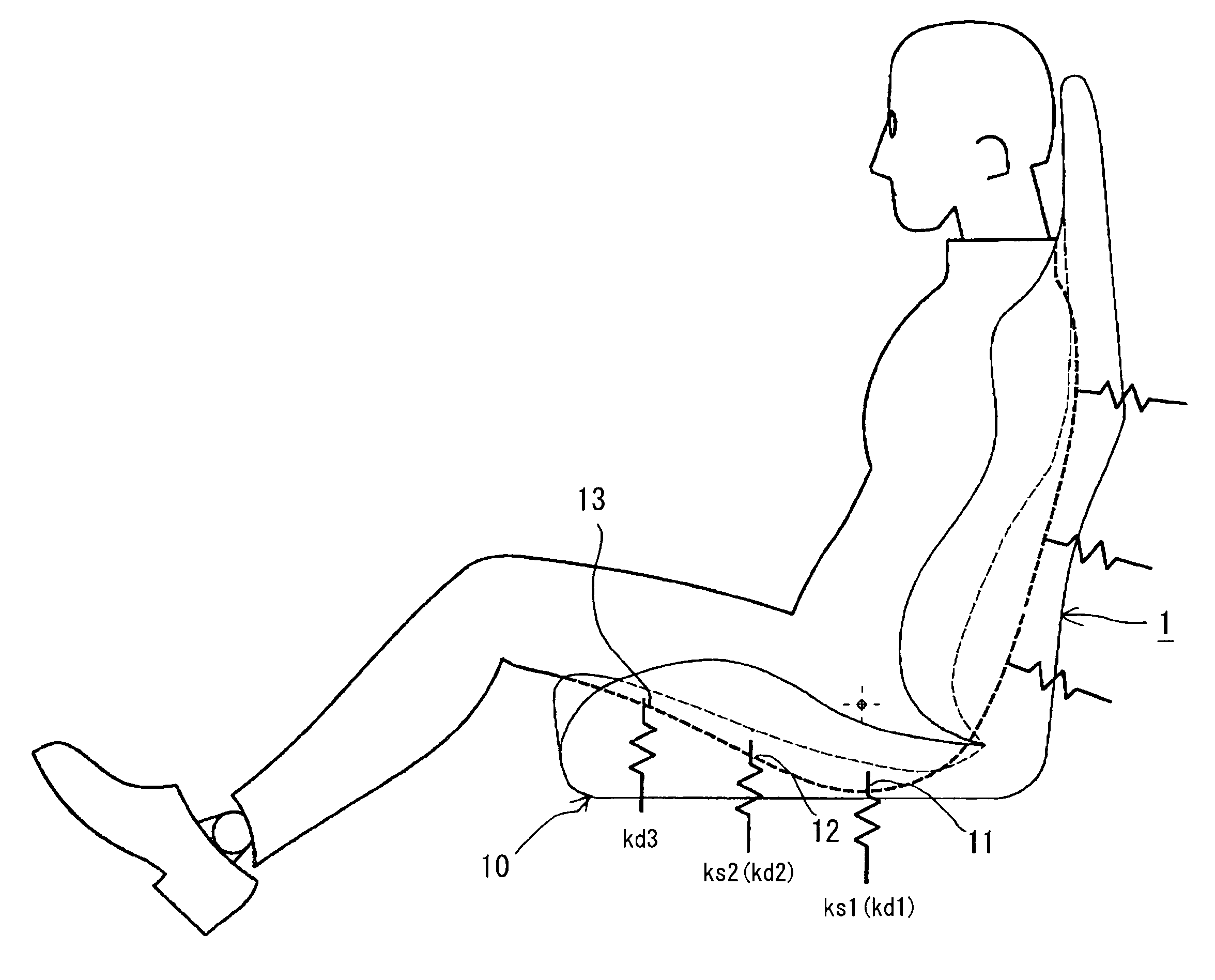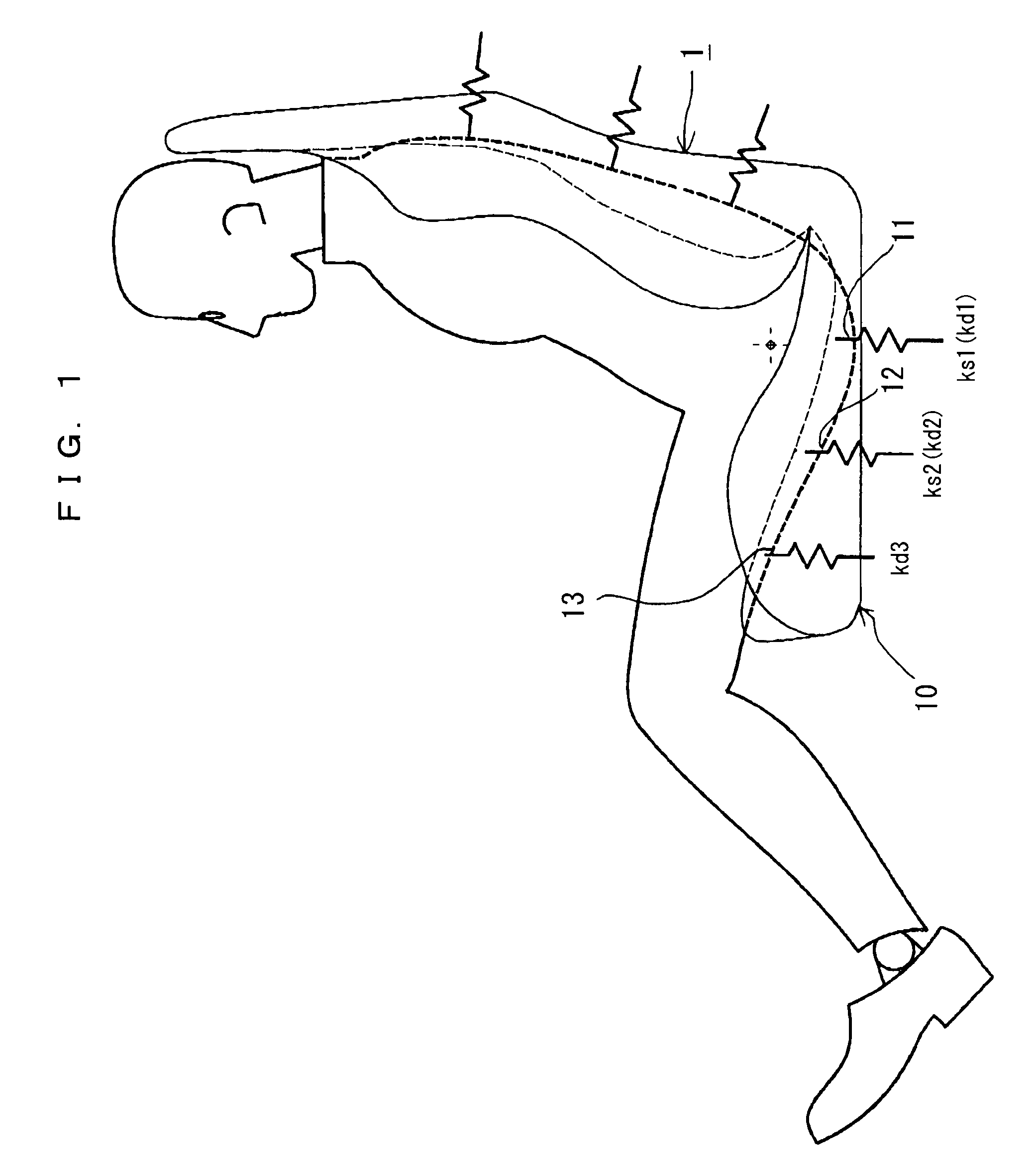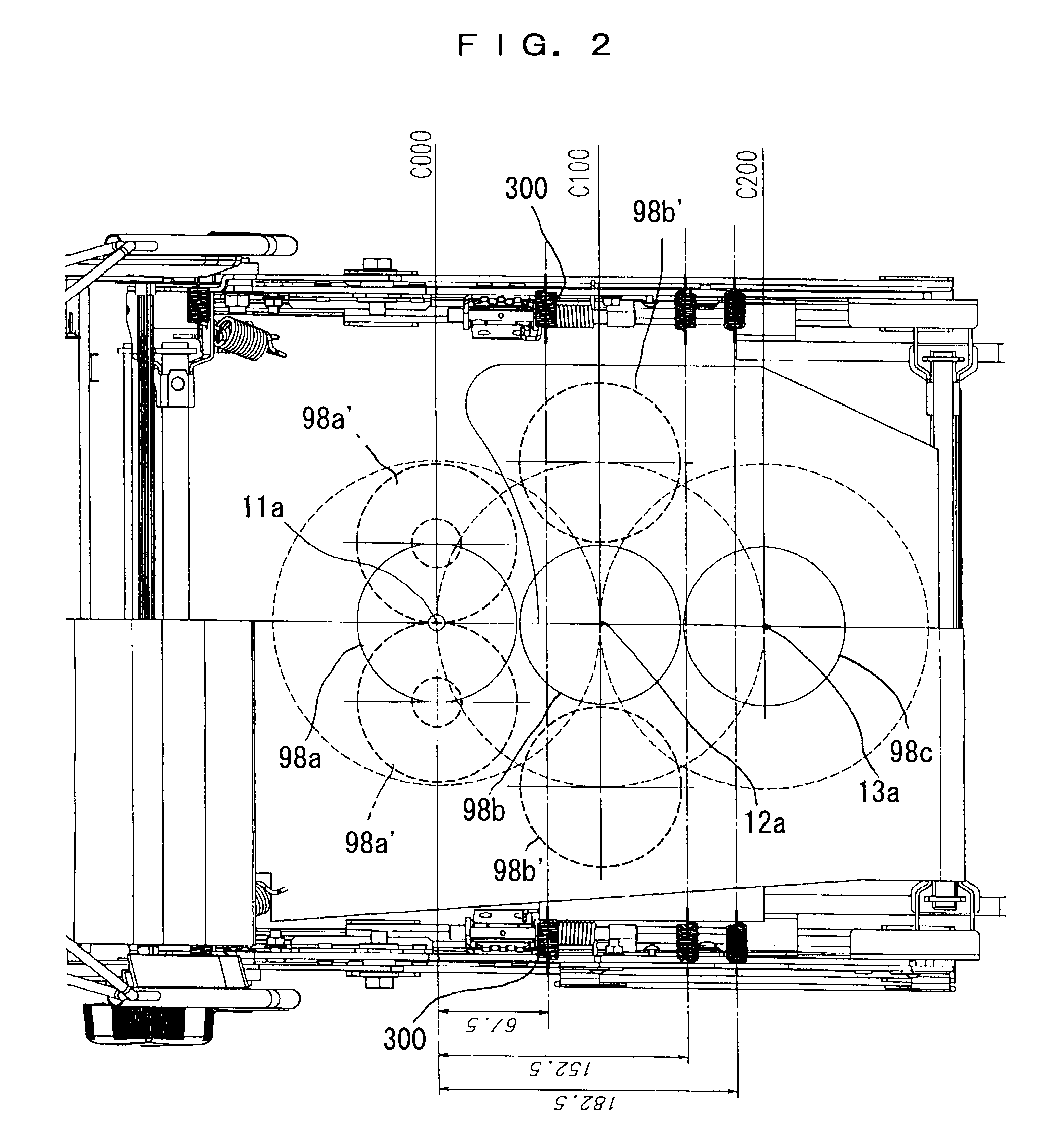Vehicle seat and vehicle seat evaluation method
a vehicle seat and seat technology, applied in the field of vehicle seats, can solve the problems of large influence of vibration inputted via members arranged below the ischial tuberosities, and achieve the effects of damping low frequency vibration, high linearity, and difference in ease of transmission
- Summary
- Abstract
- Description
- Claims
- Application Information
AI Technical Summary
Benefits of technology
Problems solved by technology
Method used
Image
Examples
example 1
[0160]As shown in FIG. 3, example 1 is constituted including a flat support member 20 strained in the forward / backward direction as the seat cushion 10. The flat support member 20 is disposed at the lowest layer in the cushion material constituting the seat cushion 10, and a three-dimensional knitted fabric, a two-dimensional woven fabric, or the like can be used. In this embodiment, a three-dimensional knitted fabric is used. A rear edge portion 21 of the flat support member 20 is supported by a plurality of coil springs 30 as rear spring members engaging with a rear end frame 10a of the seat cushion 10. The coil springs 30 are arranged at substantially equal intervals and substantially in parallel with each other. In this embodiment, four extension coil springs with a spring constant (static spring constant 0.4 kg / mm are used. Note that the three-dimensional knitted fabric (three-dimensional net member) is knitted by reciprocating a connecting thread between a pair of ground knitt...
example 2
[0173]As shown in FIG. 7 and FIG. 8, example 2 is structured having, similarly to the example 1, the auxiliary flat support member 40 at a lower layer of the flat support member 20 and in the range corresponding to the second human body support portion 12 and the third human body support portion 13. Further, in a rear portion of the seat cushion 10, there is disposed a torsion bar 10f, which is arranged along a width direction of the seat cushion. An arm member 10g is coupled to this torsion bar 10f, and a rear edge support frame 10h is coupled to this arm member 10g. Accordingly, the rear edge support frame 10h is supported swingably in the forward / backward direction by elasticity of the torsion bar 10f. Therefore, in this example, the torsion bar 10f functions as a rear spring member and constitutes a deep-layer spring member giving spring force and damping force. More specifically, the auxiliary flat support member 40 is provided so that a substantially middle portion of a rear e...
example 3
[0197]In Example 3, a structure having the dynamic spring constants of the present invention is realized in a structure in which a urethane member is mounted and used on a flat spring member, which is different from the structure in which a three-dimensional knitted fabric is provided by stretching as in the example 1 and the example 2.
[0198]Specifically, in this example, as shown in FIG. 62 and FIG. 63, a torsion bar 10k to be a deep-layer spring member is arranged as a rear spring member in the rear portion of the seat cushion 10, an arm member 10m which pivots downward about the torsion bar 10k from a substantially horizontal position in the drawing is provided, and a rear edge support frame 10n is coupled thereto. Then, with this rear edge support frame 10n, a urethane member 60 constituting a middle-layer spring member as well as a rear end of a flat spring member 50 are engaged and supported thereon. A front end of the flat spring member 50 is engaged with a fixing frame 10j l...
PUM
 Login to View More
Login to View More Abstract
Description
Claims
Application Information
 Login to View More
Login to View More - R&D
- Intellectual Property
- Life Sciences
- Materials
- Tech Scout
- Unparalleled Data Quality
- Higher Quality Content
- 60% Fewer Hallucinations
Browse by: Latest US Patents, China's latest patents, Technical Efficacy Thesaurus, Application Domain, Technology Topic, Popular Technical Reports.
© 2025 PatSnap. All rights reserved.Legal|Privacy policy|Modern Slavery Act Transparency Statement|Sitemap|About US| Contact US: help@patsnap.com



